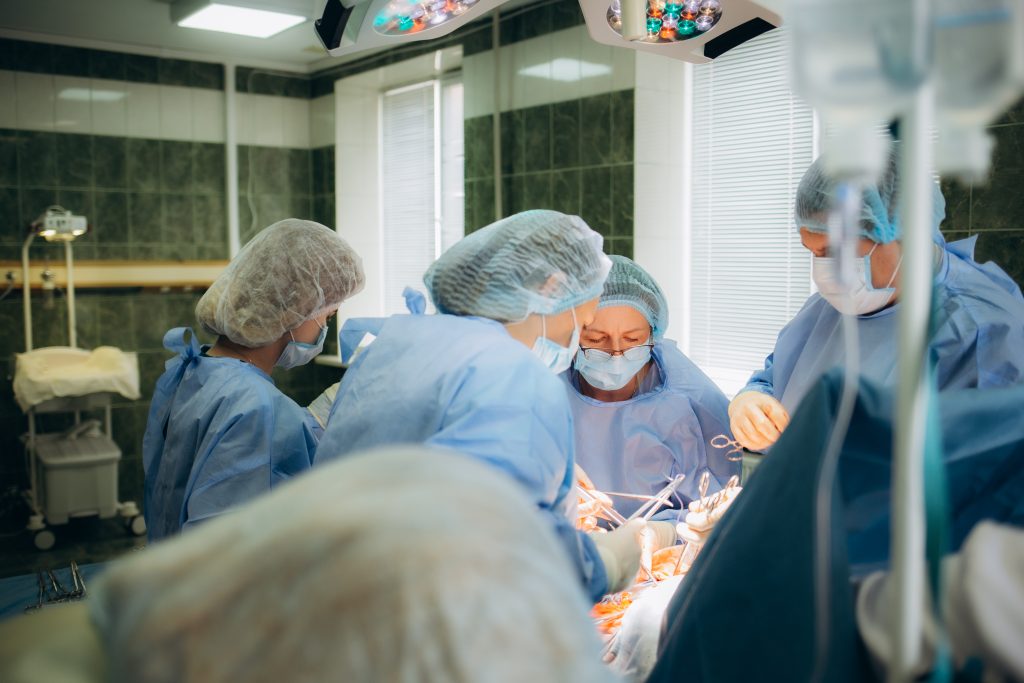Septal Myectomy Surgery
A septal myectomy is a surgical procedure performed on the heart to treat hypertrophic cardiomyopathy, which is characterized by the thickening of the heart muscle. This operation involves the removal of a section of the thickened heart tissue in order to enhance blood circulation throughout the heart. In the majority of cases, septal myectomy effectively treats hypertrophic cardiomyopathy.

Who Is a Candidate for Septal Myectomy?
Patients with hypertrophic cardiomyopathy are usually prescribed medication to alleviate their symptoms, which may vary in intensity. In cases where the prescribed medication fails to effectively treat the condition, the care team may suggest undergoing septal myectomy surgery.
The individuals who are usually considered suitable for septal myectomy are those who have a significant increase in the thickness of their heart muscle in the left ventricles or those who have been diagnosed with HCM of varying symptoms and desire to have a child.
Why might I need septal myectomy?
Medications are often sufficient to alleviate symptoms of hypertrophic cardiomyopathy in numerous situations. If symptoms persist despite medication, procedures like septal myectomy are frequently successful.
Surgeons have been performing the surgical procedure of septal myectomy for a long time, which is considered to be relatively safe. In certain cases, women with hypertrophic cardiomyopathy may require a septal myectomy even if their symptoms are not severe, especially if they plan on becoming pregnant.
Have a conversation with your doctor to determine if you are eligible for either septal myectomy or alcohol septal ablation. Discuss the advantages and disadvantages of each procedure with your doctor. Typically, surgery is recommended for younger individuals and those with more significant thickening. If you have a septal anatomy that is more suitable for surgery or if additional heart work, such as mitral valve repair, is required, septal myectomy is the preferred option.
Benefits of septal myectomy:
- After undergoing surgery, the majority of individuals notice a notable relief in their symptoms related to HCM. These improvements typically involve reduced levels of exhaustion, difficulty breathing, and discomfort in the chest area.
- After undergoing surgery, individuals often experience an improvement in their ability to engage in physical activity.
- Better quality of life: For individuals with HCM, septal myectomy often leads to a notable enhancement in their overall well-being.

How do I prepare for septal myectomy?
Due to its invasive nature, septal myectomy will only be suggested by a doctor if your HCM is in a severe condition and there is a high probability of a successful surgical result.
In order to guarantee a positive result, it is probable that a doctor will request numerous tests to assess the extent of your condition. Some illustrations of these tests comprise:
- A blood test will be conducted to assess your general blood counts and ascertain if you will require a blood transfusion either during or after the surgical procedure.
- To assess the current functioning of your heart, the thickness of its muscles, and the impact of blood circulation, echocardiograms are used.
- Electrocardiograms will be used to investigate if there are any irregular heart rhythms present.
- Using cardiac MRI to examine the heart with greater precision
What happens during the surgery:
- General anesthesia is administered in order to induce unconsciousness.
- An incision is made to access the inside of your chest.
- While your heart is not functioning, the surgeon utilizes a heart-lung bypass machine to maintain the circulation of your blood.
- A cut is created in the thickened wall, and a small part of the muscle is gently taken out.
- The remaining partition is fixed and the heart is brought back to function again.
- The chest is shut, and drains are inserted to eliminate any accumulation of liquids.

What happens after a septal myectomy?
After undergoing a septal myectomy, you will begin your recovery in the intensive care unit (ICU). During this time, it is possible that you may have either a urine catheter or a chest drainage tube inserted, which will remain in place for a period of 24 to 48 hours.
After approximately 48 hours, with the assistance of a physical therapist, you will begin to engage in walking. The majority of individuals typically spend fewer than five days recuperating in the hospital.
What should I anticipate following my septal myectomy?
Due to the invasive nature of the procedure, it is anticipated that you will need to remain in the hospital for several days. Initially, you will likely be placed in an intensive care unit before being transferred to a regular patient room.
The average length of hospitalization following a septal myectomy procedure was 4.9 days, as reported in a 2020 observational study conducted by a referral center.
After undergoing surgery, the most frequent issue that may arise is atrial fibrillation (AFib), which is characterized by an irregular heartbeat. AFib can prolong your hospital stay, as indicated by a study conducted in 2020 that found an average of 5.8 additional days in the hospital for patients with this condition.
It will require some time for the healing process to occur after a septal myectomy. Typically, you will have to restrict your activities for a period of 6 to 8 weeks, occasionally even longer, after the surgical procedure.
Your doctor will keep observing your heart rhythms and progress to assess if your HCM symptoms are improving post-surgery.
Treatment in Türkiye:
The medical staff of surgical teams, doctors, and consultants at REHABTÜRK can provide the best treatment options and free consultations, striving to stay up-to-date on the latest medical technologies and methods.

